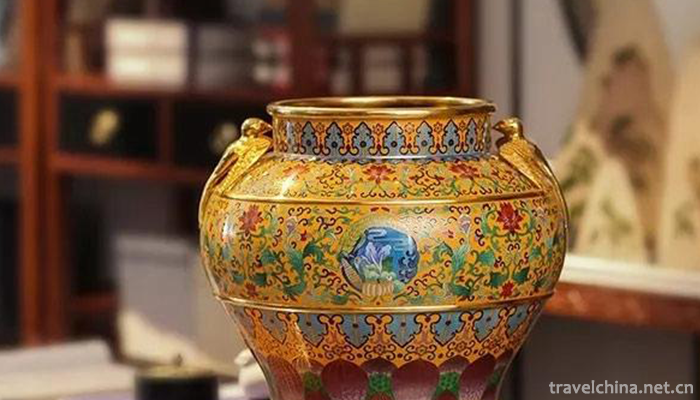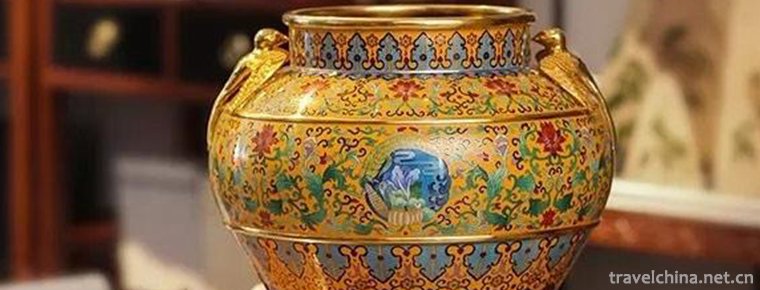Mosaic inlaid porcelain
Mosaic inlaid porcelain
Declaration area or unit: Puning City, Guangdong Province
Chinese mosaic art has a long history and unique style. In the Yin and Shang Dynasties, the decorative patterns of gold inlaid with jade appeared in bronze casting. With the continuous improvement of technological level, natural colored stones, pebbles, shells, molars, gems, jades and artificial glass, ceramics, wood and so on have become mosaic raw materials. In the long-term development process, mosaic art has accumulated many important technical means, including direct mosaic method, prefabrication method, anti-paste and reverse-paste method, positive-paste and positive-paste method, etc. Besides plane mosaic, it can also be mosaic on relief. This mosaic method can further enhance the stereo sense of mosaic objects. After Ming and Qing Dynasties, relief mosaics were widely used in decoration of various arts and crafts. In the middle and late Qing Dynasty, relief mosaics were also used to mosaic the stories of opera characters on different "dizi", such as inlaid porcelain and bone wood. Mosaic handicraft has the advantages of strong, sun-proof, moisture-proof and non-discoloration. The texture of materials and the resulting shape, color and light effect add artistic charm to the mosaic handicraft, showing the beauty of rough, thick, luxurious and gorgeous.
Embedded porcelain, also known as "Jurao", "Jianlao", "Jianlao", is a popular folk architectural decoration art in Chaoshan area of Guangdong Province. On the basis of painting and sculpture, it uses specially fired enamel chips to glue figures, flowers, birds, animals and other artistic forms to decorate the roofs and walls of temples and buildings. Chaoshan inlaid porcelain technology has a unique style, mostly using semi-relief or round carving style, vivid image, colorful, solid and stable texture, can withstand the sun and rain without fading. In Chaoshan area, porcelain workshops often cooperate closely with inlaying craftsmen to produce low-temperature porcelain of various colors. These chinaware are carefully cut by craftsmen to form the necessary chinaware for mosaic. Then the chinaware pieces are assembled into local components with adhesives. Finally, the components are combined to form various patterns or statues that represent folk customs, folk stories or auspicious and festive themes. Daliao inlaid porcelain and Puning inlaid porcelain are prominent representatives of Chaoshan inlaid porcelain. Daliao inlaid porcelain has a history of more than 100 years. It is mainly Chaoshan style and has the characteristics of southern Fujian. Puning inlaid porcelain has a long history, which can be traced back to Wanli period of Ming Dynasty.


-
1.National Palace Museum Taipei
Taipei national the Imperial Palace Museum, also known as the Taipei the Imperial Palace and Zhongshan Museum. It is one of the three major museums in China and one of the largest comprehensive museum
Time 2018-10-12 -
2.Zhashlenbu Temple Scenic Spot in Shigaze
Zashrunbu Temple means "auspicious Xumi Temple". Its full name is "Zashrunbu Baijid Qinqu Tangkelenan Bajawalin". It means "auspicious must gather in Fushu to win over Fangzho
Time 2018-12-12 -
3.Jiankou Great Wall
The Great Wall is located in Badaohe Township, northwest of Huairou District, Beijing suburb. It is 1141 meters above sea level and about 30 kilometers away from Huairou County.
Time 2019-01-21 -
4.Jianglangshan 28du Tourist Area
28du Town, located in Jiangshan, Zhejiang Province, is a famous historical and cultural town. It is a writer's creation base in Zhejiang Province. It is located at the junction of Zhejiang,
Time 2019-01-21 -
5.Qingshuihe Ming Great Wall Site
The site of the Great Wall of the Ming Dynasty begins at Jiayuguan in Jiayuguan City in the west, passing through Jiuquan, Gaotai, Linze, Zhangye, Shandan, Yongchang, Minqin
Time 2019-02-07 -
6.Baxian Yaochi Party
Baxian Yaochi gathering is a traditional dish in Tai'an, Shandong Province, which belongs to the Shandong cuisine family. Egg white is the main material for Baxian Yaochi gathering.
Time 2019-03-27 -
7.De ang Watering Festival
The De'ang Water-Sprinkling Festival (also known as the Water-Sprinkling Festival) is held seven days after the Qingming Festival every year. It is a three-day commemorative event that combines the th
Time 2019-04-26 -
8.Huaihai Opera
Huaihai Opera, one of the national intangible cultural heritage, is a local traditional drama in Huaian City and Lianyungang City of Jiangsu Province.
Time 2019-05-04 -
9.Money board
Money board is a traditional rap art in Sichuan, Guizhou and other places. It originated in Chengdu and Chongqing more than 300 years ago, and gradually spread to Yunnan
Time 2019-05-07 -
10.Chak Chak
"Chuck Chuck" is a highly interactive dialogue between two or more people. According to the different content and language characteristics, it can be roughly divided into five types:
Time 2019-06-10 -
11.Yangzhou Qingqu
Yangzhou Qingqu, also known as "Guangling Qingqu" and "Weiyang Qingqu", is a form of Musical Singing developed on the basis of popular songs and minors popular in Yangzhou during t
Time 2019-07-10 -
12.Yamugou scenic spot
Yamugou scenic spot is located on the Bank of Taiping River (a famous scenic spot in Guizhou Province) in Jiangkou County, Tongren City, Guizhou Province, adjacent to Fanjing Mountain (National Nature Reserve, China's top ten famous summer resort).
Time 2020-10-13